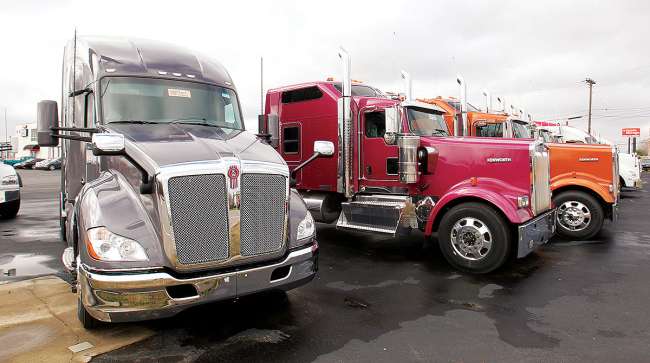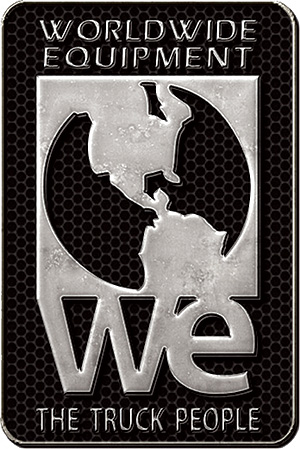Senior Reporter
May Class 8 Orders Plummet to Nearly Three-Year Low

[Stay on top of transportation news: Get TTNews in your inbox.]
U.S. Class 8 orders in May fell to 10,800, the lowest point in nearly three years, ACT Research reported, and once-scarce 2019 production slots opened.
ACT cited a preliminary volume that truck makers will revise with final updates.
A year earlier, orders were 35,608. This May’s orders were the lowest since 10,358 in July 2016.
May saw NA Class 8 orders fall below the 15,900 units averaged through the year’s first trimester, and year-to-date Class 8 net orders have contracted 64% compared to the first five months of 2018. #HeavyDuty #Class8 https://t.co/jATIQ6f84Z pic.twitter.com/LlR5bpVHrp — ACT Research (@actresearch) June 5, 2019
“It is certainly a wake-up call. No question,” said ACT Vice President Steve Tam, adding that the volume was not what ACT had expected. “We were thinking low teens.”
“Clearly, demand is waning,” Tam added. “Rates continue to deteriorate. So I think as that story keeps playing out, more and more carriers are becoming cognizant of market conditions, if they are not already getting that message through their firsthand experience.”
This is the typical period of the year when ACT and most of the industry expected the momentum to slow.
Others see more immediate influences.
Analyst Jamie Cook with Credit Suisse wrote in an investor note: “There is fear that lack of resolution around trade wars is beginning to impact demand. Through the first five months of the year, Class 8 orders total 74,400 units, down significantly from 206,500 units over the same period last year.”
One truck dealership executive said pockets of open slots from multiple truck makers are starting to appear.

“I think trucking companies have either canceled or trimmed back on what their actual needs are,” Robert Gomez, executive vice president of sales at Worldwide Equipment Inc., told Transport Topics. “They have right-sized their needs for this year. Which has opened up some slots for dealers that were patient or missed out on ordering trucks. Now we have some flexibility, not a lot but some flexibility.
“It could be from reshuffling of the order board, or cancellations of orders — which I believe is the bigger portion. Or an increase in production,” he said.
The Prestonsburg, Ky.-based company is a truck and trailer dealer representing multiple brands including Mack Trucks, Volvo Trucks North America, Kenworth Truck Co., International Truck, Hino Trucks and Isuzu. The company operates in six states and has 16 full-service dealerships and 15 leasing locations, among other facilities.
FTR pegged orders at 10,400, calling it a normal number for this point in a 12-month cycle.
“Here’s what the interesting thing was,” said Don Ake, vice president of commercial vehicles at FTR. “Order cycles usually start later, September or October. This one started in June [2018]. So this is the last month of the order cycle for those 12 months. In a way, it’s a very normal number based on what has happened before [at the bottom].”
One truck maker CEO said the orders were coming from fleets as part of a replacement-plus strategy.

Clarke
“A portion of that is driven by technology, customers who appreciate the safety systems and the impact that has on their overall costs, but also their ability to attract and retain drivers,” Navistar International Corp. Chairman and CEO Troy Clarke said in its latest earnings call. “These are, I would say, strategic, well thought out, longer term players in the industry. Those are the guys and gals who are still ordering trucks, and hanging in there. Their orders are still in the backlog, and we anticipate delivering those.”
Meanwhile, 18 months ago a customer could get a truck in a matter of six to 10 weeks, Gomez said, then in 2018 it jumped to a little more than a year. Now, a customer can get a truck in September or October.
“People aren’t looking into 2020 like they were into 2019, when it was almost like a gold rush, a frantic rush to get a slot,” Gomez said.
Gomez believes dealer inventory, at least for the truck manufacturers Worldwide represents, is higher than it has been in years, which is probably a good thing for the customer because deals will become available.
Typical inventory levels are 2 to 2.5 months, said Tam, and at the end of April inventory stood at 2.7 months — higher but not alarmingly so. “The caveat is sales have to stay strong.”
At the same time, Gomez said the excess inventory is really going to slow down production and limit the truck makers’ ability to manufacture additional trucks.
“They will have to come up with some unique ways to get a dealership to purchase so they can keep their factories running,” he said.
ACT has forecast for 2019 342,000 units of production levels and sales of 329,000, which adds inventory.
In 2020, ACT called for production of 245,000 and 264,000 in sales.




